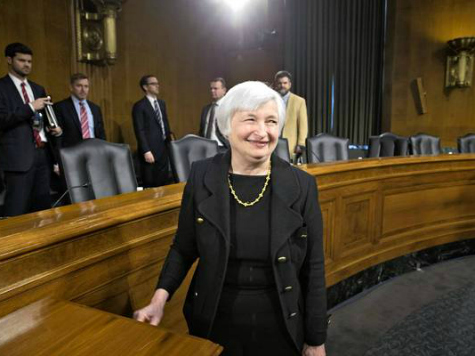
Last week’s job numbers suggest very strongly that the Obama Depression may be accelerating.
Economists of all stripes are trying to pretend that the numbers were not as ugly as they well and truly are, but some of the realists are pointing out the obvious, namely that the US economy continues to shed jobs and workers. David Zervos of Jeffries & Co puts the situation in plain terms:
The December payroll report does NOT suggest that labor market momentum is increasing. The modest 78k increase in payrolls, plus the 34k in positive revisions barely gets us half of what was expected. But the most concerning part of the report comes from the household survey where we saw another 347,000 people leave the labor force. And it was not just more retirees, or more youngsters going to college. The largest acceleration downward in the participation rate came from the 45-54 year old cohort – that rate fell 0.5 percent, from 79.6 to 79.1. In the early part of the crisis, the most important driver of a lower participation rate came from the younger cohorts. But these 16-19 and 20-24 year old groups have been stable in recent quarters, albeit at much lower levels. The “trouble” now is manifesting itself with the seasoned veterans!
The continued attrition of 45-54-year-olds in the workforce is cause for concern by itself, but with the other deflationary factors at work in the US economy, alarm bells ought to be ringing in Washington DC.
First, the velocity of money – the amount of times a dollar changes hands in a given year – continues to fall. Second, the banking and non-bank sectors continue to de-leverage, meaning that we are taking credit capacity out of the economy. Without more turnover in money and net growth in terms of credit, the outlook for growing jobs is small to none.
Sadly, the policies being followed at the Fed and White House are stifling job creation even as they encourage moral hazard and the growth of new bubbles in the financial sector. The slew of new regulations put in place in Washington since 2008 makes it virtually impossible for more than half of all adult Americans to qualify for a home mortgage. The fact of a weak jobs market and a net exodus of adults from the workforce also implies a smaller market for homes – even with the continued growth in the overall population.
Yet newly installed Fed Chairman Janet Yellen tells Time magazine that the housing market recovery will continue. Does anyone on the Fed staff bother to read the press releases from CoreLogic which reveal that 18 of 20 cities in the Case-Shiller 20-city index were down in October? The demand-siders on the Federal Open Market Committee (FOMC) believe that ultralow interest rates help the US economy. Again writes Zervos:
The FOMC has told us they see slack, not slackers. Its why the SEP forecast for the end of 2016 has a 3 percent growth rate, a 2 percent PCE inflation rate, a 5.5 percent unemployment rate and 1.75 funds rate. They believe that very low risk free real rates will be appropriate even with “equilibrium” growth, “equilibrium” inflation and unemployment at or near the NAIRU. Why do they believe this? Because they think that by running policy “hot”, even at equilibrium, they can bring these disaffected workers back into the labor market. That is the plan!!
The trouble is, however, that “hot” policy like what the FOMC thinks it is pursuing is actually encouraging deflation in the US economy by robbing savers of badly needed income – this to the tune of about $100 billion per quarter just in terms of the return on US bank deposits. While low rates were helpful and entirely necessary early in the post-crisis response, today low rates are arguably a net negative for the US economy.
The great editor of The Economist Walter Bagehot warned that keeping interest rates too low for too long would scare money out of the markets, causing deflation. My friend David Kotok of Cumberland Advisors discussed this issue in a wide ranging interview posted on Zero Hedge before the holiday:
Antoine Martin of the Federal Reserve Bank of New York, in his important 2005 paper “Reconciling Bagehot with the Fed’s Response to September 11,” argues that Bagehot had in mind a commodity money regime in which the amount of reserves available was limited. Thus, keeping rates high was a way to draw liquidity, that is gold, back into the markets. Bagehot also understood that low interest rates fuel bad asset allocation decisions – what we call “moral hazard.” In the age of fiat money, however, economists have taken the opposite view, namely that an unlimited supply of reserves obviates the need to attract money back into the financial markets.
The neo-Keynesian, demand-side mindset of Chairman Yellen and the rest of the FOMC does not allow them to see or accept that low rates are actually hurting employment, credit, and capital formation. Investors must be paid to take risk. The declining leverage within the US banking system, which was discussed in a Zero Hedge post about Q4 2013 bank earnings (“Are Large Cap Banks Ready to ‘Break Out?'”), is a red flag that Congress ought to be discussing with Chairman Yellen on a weekly basis. Meanwhile moral hazard grows under QE, and Fed-induced bubbles proliferate in the equity and debt markets.

COMMENTS
Please let us know if you're having issues with commenting.